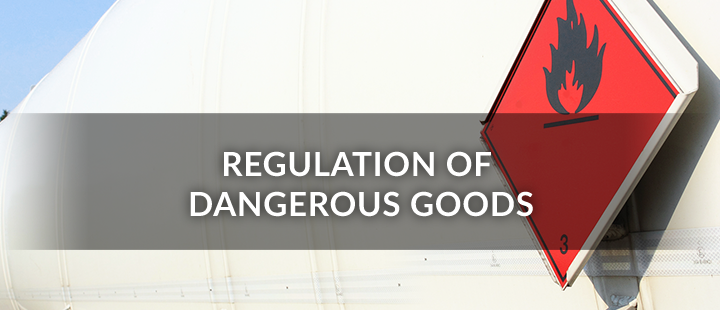Regulation of Dangerous Goods
Main ContentChapter 4.3 Special Packing Requirements for Pressure Receptacle
| 4.3.1 |
Legal Requirements |
|
|
|
| 4.3.1.1 |
Pursuant to section 145 of Cap. 295G:
(1) A person must not use a pressure receptacle for containing any Class 2 S2DG unless— (a) the receptacle is of a type approved by the Director as being appropriate for containing the Class 2 S2DG; (b) the receptacle is inspected or tested— (i) in accordance with the standard specified in the code of practice; (ii) at the frequency specified in the code of practice; and (iii) by a person approved by the Director for the purposes of such inspection or testing; and (c) the receptacle has passed the inspection or testing.
(2) Subsection (1) does not apply to— (a) a pressure receptacle (whether a refillable pressure receptacle or a non-refillable pressure receptacle) that contains Class 2 S2DG in limited packs; or (b) a non-refillable pressure receptacle in respect of which all of the following conditions are met— (i) the receptacle is manufactured in accordance with the standard specified in the code of practice; (ii) either of the following— (A) the receptacle contains Class 2 S2DG directly without any form of intermediate containment and its water capacity does not exceed 1 litre; (B) the receptacle contains Class 2.1 S2DG or Class 2.2 S2DG directly without any form of intermediate containment the pressure of which does not exceed 35 bars and its water capacity does not exceed 25 litres; or (C) the receptacle contains Class 2.1 S2DG or Class 2.2 S2DG directly without any form of intermediate containment the pressure of which exceeds 35 bars but does not exceed 250 bars and its water capacity does not exceed 5 litres. |
| 4.3.2 |
General Application |
| 4.3.2.1 |
Special packing requirements for pressure receptacle include the requirement of obtaining approval from FSD as stipulated in section 145(1)(a) and the requirement of inspection or testing as stipulated in section 145(1)(b). This chapter provides:
(a) the standards, which a non-refillable pressure receptacle is manufactured in accordance with, for the purpose of satisfying the condition stipulated in section 145(2)(b)(i) for the exemption of the special packing requirements; and (b) the standards and frequency for inspection or testing of pressure receptacle for the purpose of section 145(1)(b)(i)&(ii). |
| 4.3.2.2 |
Application for approval of pressure receptacle(s) shall be submitted to the Dangerous Goods Enforcement Division of FSD for processing by making reference to relevant guideline published in FSD’s website. |
| 4.3.2.3 |
Special packing requirements do not apply to pressure receptacles which fulfil the condition stipulated in section 145(2)(a) or (b). |
| 4.3.3 |
Standards for Manufacturing of Non-refillable Pressure Receptacle |
| 4.3.3.1 |
For the purpose of satisfying the condition stipulated in section 145(2)(b)(i) for the exemption of the special packing requirements, the non-refillable pressure receptacle shall be manufactured in accordance with the following standards: (a) GB 17268; (b) ISO 11118; or (c) DOT 39. |
| 4.3.3.2 |
Apart from standards specified above, other national/international standards can also be submitted to FSD for consideration. |
| 4.3.3.3 |
It is important to note that apart from fulfilling the condition in section 145(2)(b)(i), any one of the conditions stipulated in section 145(2)(b)(ii) shall also be met at the same time in order to exempt from the special packing requirements. |
| 4.3.4 |
Inspection or Testing Standards and Frequency for Pressure Receptacle |
| 4.3.4.1 |
Refillable pressure receptacle for Class 2 DG, other than cryogenic receptacle, shall be subject to periodic inspection and test in accordance with the following:
(a) Checking of the external conditions of the pressure receptacle and verification of the equipment and the external marks; (g) A leakproffness test of bundles of cylinders after reassembly.
(NOTE 1: The hydraulic pressure test may be replaced by a test using a gas, where such an operation does not entail any danger.
NOTE 2: For seamless steel pressure receptacle, the checking stated at (b) and the hydraulic pressure test stated at (d) above may be replaced by a procedure conforming to EN ISO 16148:2016 “Gas cylinders – Refillable seamless steel gas cylinders and tubes – Acoustic emission examination (AT) and follow-up ultrasonic examination (UT) for periodic inspection and testing”.
NOTE 3: The checking stated at (b) and the hydraulic pressure test stated at (d) above may be replaced by ultrasonic examination carried out in accordance with EN 1802:2002 for seamless aluminium alloy gas pressure receptacle and in accordance with EN 1968:2002 + A1:2005 for seamless steel gas pressure receptacle.)
NOTE 4: For bundles of cylinders the hydraulic test specified in (d) and (e) above shall be carried out on the cylinder shells and on the manifold. |
| 4.3.4.2 |
Pressure receptacle for containing UN 1001 ACETYLENE, DISSOLVED and UN 3374 ACETYLENE, SOLVENT FREE shall only be inspected and tested in accordance with (a), (c) and (f) above in addition to the checking of the condition of the porous material (e.g. cracks, top clearance, loosening, settlement). |
| 4.3.4.3 |
For Class 2 refrigerated liquefied gases, closed cryogenic receptacle shall be subject to periodic inspections and tests in accordance with BP203 in Appendix 5. |
| 4.3.4.4 |
If the requirements stated above could not be met, as an alternative, the pressure receptacle shall undergo prescribed inspection and testing as required in the corresponding pressure receptacle design standard as listed below subject to scrutiny by FSD. Details of the inspection and testing shall be clearly stated at the time of application for approval of pressure receptacle.
(a) GB Standard; (b) DOT Standard; (c) ISO Standard; (d) AS Standard; (e) BS Standard; or (f) Any other national/international standards.
The details of inspection and testing approved by FSD during the approval of pressure receptacle shall be strictly followed. In case no specific testing frequency is specified in the standard, testing frequency stated in corresponding BP in Appendix 5 shall be followed. |


